
Chevrolet Colorado

Model Overview
The Chevrolet Colorado is a mid-size pickup truck with a spacious cabin and strong refinement that make it a comfortable everyday vehicle. Chevrolet offers a diesel engine and a V6 as part of a wide range of powertrain options. A ZR2 trim is an off-road package that turns Colorado into one of the toughest trucks in its class. There's no regular cab model; the range starts with an extended cab body.
Photos

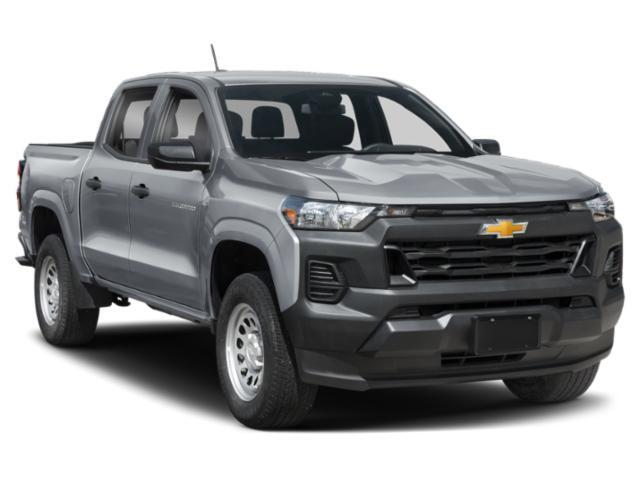
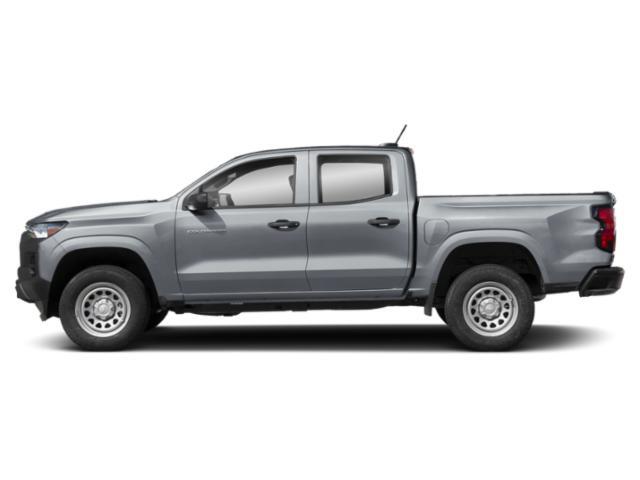
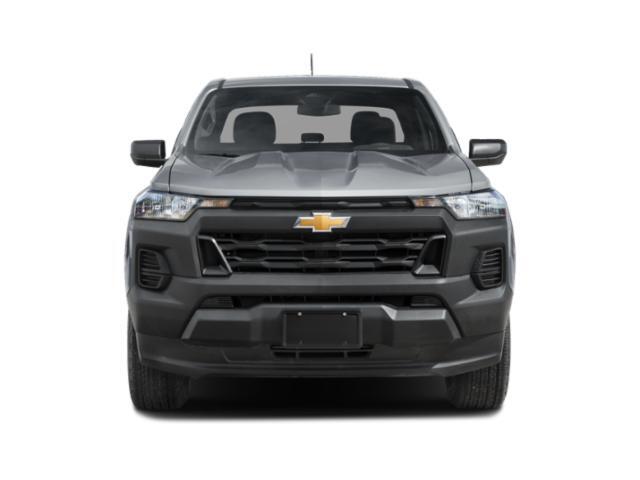
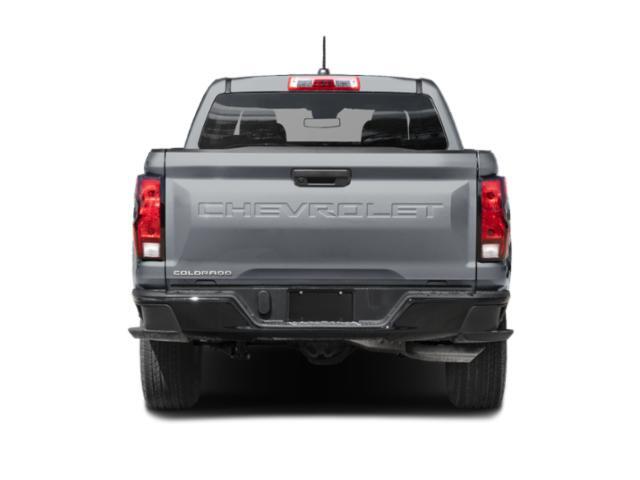
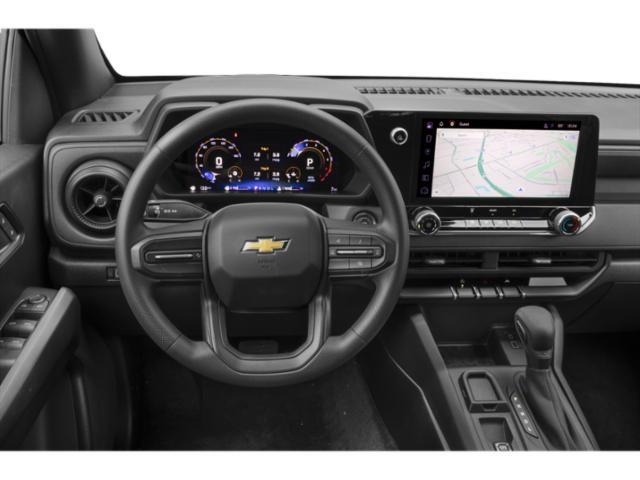
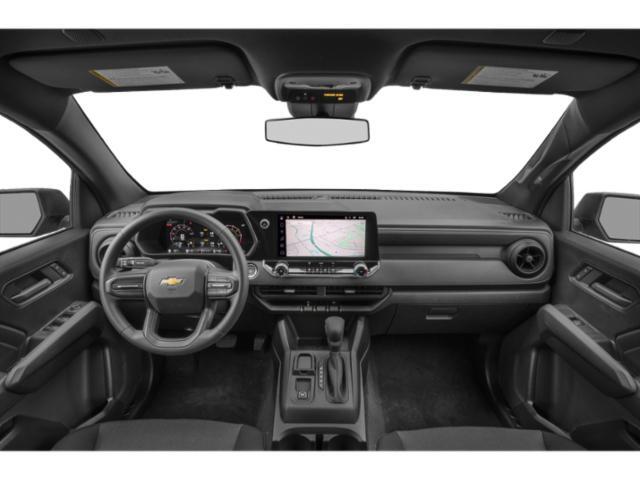
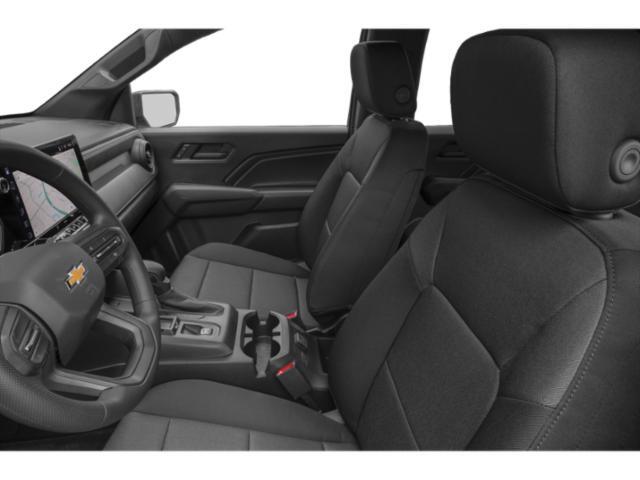

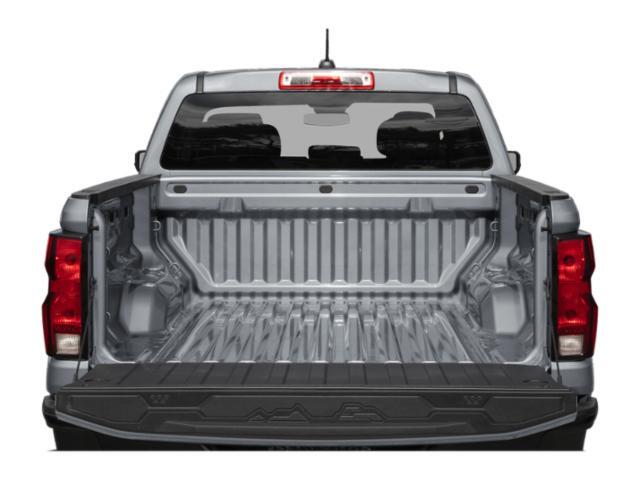


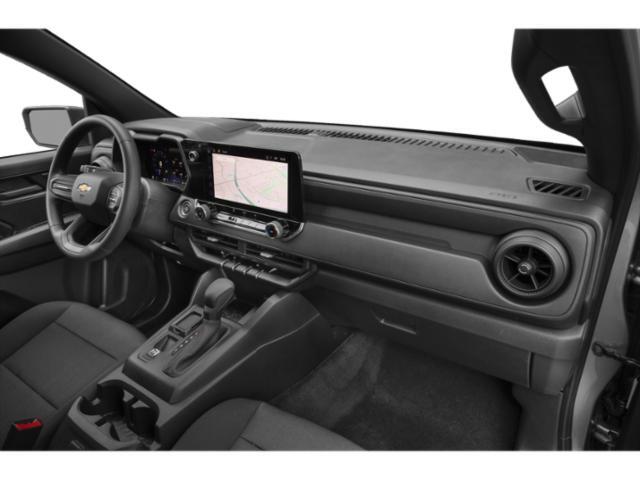















Reviews and News
Owner Scores
Comfort
N/A
Performance
N/A
Fuel Economy
N/A
Interior Design
N/A
Exterior Styling
N/A
Reliability
N/A
Owner Reviews
huroncuck
love the colorado for a light sport utility truck
November 22, 2017
Overall Score
if they would make a hydrogen fuel cell option we would be much better off. love the ride, comfort and style of the truck, just need to get the car makers to wake up to green movements.
Comfort
10
Performance
10
Fuel Economy
10
Interior Design
10
Exterior Styling
10
Reliability
10
Recall Information
* Data provided by Transport Canada
Recall number
Recall date
System affected
Model year(s) affected
Recall number
2024-541
Recall date
2024-09-19
System affected
Seats And Restraints
Model year(s) affected
2023
Manufacturer Recall Number:
N242453720
Units Affected:
11
Notification Type:
Safety Mfr
Issue:
On certain vehicles, the bolts that attach the driver and/or front passenger seat belt buckles may not have been properly tightened. As a result, the seat belt(s) could loosen or detach in a crash.
Note: You may notice a rattle where the seat belt buckle is fastened to the seat.
Safety Risk:
A seat belt that detaches in a crash could create an increased risk of injury.
Corrective Actions:
General Motors will notify owners by mail and advise you to take your vehicle to a dealership to tighten the driver and/or front passenger seat belt buckle attachment bolts.
Recall number
2024-114
Recall date
2024-02-22
System affected
Brakes
Model year(s) affected
2023
Manufacturer Recall Number:
A232424660
Units Affected:
4,981
Notification Type:
Safety Mfr
Issue:
Under certain conditions, a software problem with the front camera module could cause the Automatic Emergency Braking system (AEB) to falsely detect an obstacle and activate when it is not needed. If this happens, the system will stop or slow the vehicle down suddenly.
Safety Risk:
If the AEB system activates with braking when no potential collision is present, it could increase the risk of a crash.
Corrective Actions:
General Motors will notify owners by mail and advise you to take your vehicle to a dealership to update the front camera module software.
Recall number
2024-060
Recall date
2024-02-01
System affected
Lights And Instruments
Model year(s) affected
2023
Manufacturer Recall Number:
N232431050
Units Affected:
273,255
Notification Type:
Compliance Mfr
Issue:
On certain vehicles, a software problem could cause the lower beam headlamps not to turn on as it becomes dark outside if the multi-function switch is in the "OFF" or "PARKING LAMP" position. This could also cause the daytime running lamps (DRLs) to turn off when the vehicle is moving. As a result, the vehicles may not meet certain requirements of Canadian regulations.
Safety Risk:
Headlamps and/or DRLs that don't turn on could reduce visibility, make the vehicle less visible to others and increase the risk of a crash.
Corrective Actions:
General Motors will notify owners by mail and advise you to take your vehicle to a dealership to update the body control module (BCM)software.
Recall number
2023-591
Recall date
2023-11-02
System affected
Lights And Instruments
Model year(s) affected
2023
Manufacturer Recall Number:
N232420790
Units Affected:
7,738
Notification Type:
Compliance Mfr
Issue:
On certain vehicles, the automatic headlamps may not turn on soon enough as it becomes dark outside. Canadian regulations require automatic headlamps to turn on when the ambient light level drops below a certain point (1000 lux).
Safety Risk:
Headlamps that don't turn on as it becomes dark outside could reduce visibility and increase the risk of a crash.
Corrective Actions:
General Motors will notify owners by mail and advise you to take your vehicle to a dealership to update the body control module (BCM) software.
Recall number
2022-274
Recall date
2022-05-26
System affected
Seats And Restraints
Model year(s) affected
2022
Manufacturer Recall Number:
N222368320
Units Affected:
129
Notification Type:
Safety Mfr
Issue:
On certain vehicles, the front passenger's seat frame may not have been properly welded. As a result, the seat could fail and move in a crash.
Safety Risk:
A seat that fails in a crash could create an increased risk of injury.
Corrective Actions:
General Motors will notify owners by mail and instruct you to take your vehicle to a dealership to inspect and, if necessary, replace the front passenger's seat cushion frame.
Recall number
2020-645
Recall date
2020-12-23
System affected
Seats And Restraints
Model year(s) affected
2021
Manufacturer Recall Number:
N202322231 / N202322232 / N202322233 / N202322235
Units Affected:
41
Notification Type:
Safety Mfr
Issue:
On certain vehicles, the seat belts may have been installed with the wrong bolts. As a result, the seat belt may not be properly attached and may not work as designed in a crash.
Safety Risk:
A seat belt that does not work properly could increase the risk of injury in a crash.
Corrective Actions:
General Motors will notify owners by mail and instruct you to take your vehicle to a dealer to replace the seat belt bolts, as necessary.
Recall number
2018-289
Recall date
2018-06-01
System affected
Fuel Supply
Model year(s) affected
2018
Manufacturer Recall Number:
18188
Units Affected:
73
Notification Type:
Safety Mfr
On certain vehicles, a joint on the high-pressure fuel pump may have been improperly welded during the manufacturing process. Over time, this could cause the weld to crack and create a potential fuel leak. A fuel leak in the presence of an ignition source could increase the risk of fire, causing injury and/or damage to property. Correction: Dealers will replace the high-pressure fuel pump and high-pressure fuel pipe.
Recall number
2017-481
Recall date
2017-10-05
System affected
Airbag
Model year(s) affected
2015
Manufacturer Recall Number:
17387
Units Affected:
2
Notification Type:
Safety Mfr
On certain vehicles, the second stage of the driver frontal airbag may not deploy properly in certain high speed crashes. If the vehicle were to be involved in a high speed crash that triggers the second-stage deployment of the driver frontal airbag, the second stage of the inflator may not fill the airbag as completely and as quickly as designed, which could increase the risk of injury to the driver. Correction: Dealers will replace the driver frontal airbag module. Note: This is an expansion of recall 2016-102
Recall number
2016-102
Recall date
2016-03-02
System affected
Airbag
Model year(s) affected
2016
Manufacturer Recall Number:
28030
Units Affected:
161
Notification Type:
Safety Mfr
On certain vehicles, the second stage of the driver frontal airbag may not deploy properly in certain high speed crashes. If the vehicle were to be involved in a high speed crash that triggers the second-stage deployment of the driver frontal airbag, the second stage of the inflator may not fill the airbag as completely and as quickly as designed, which could increase the risk of injury to the driver. Correction: Dealers will replace the driver frontal airbag module.
Recall number
2016-043
Recall date
2016-01-28
System affected
Steering
Model year(s) affected
2015
Manufacturer Recall Number:
15595
Units Affected:
421
Notification Type:
Safety Mfr
Certain vehicles may experience a sudden loss of electric power steering assist due to a poor electrical connection within the torque-sensor harness connector. Steering control can be maintained, as the vehicle will revert to a manual steering mode, but will require greater driver effort. The sudden change in steering may increase the risk of a crash causing injury and/or property damage. Correction: Dealers will replace steering gear pinion sensor cover assembly. Note: If the power steering assist is lost, a message is displayed on the Driver Information Centre and a chime sounds to inform the driver.
Recall number
2015-575
Recall date
2015-11-30
System affected
Accessories
Model year(s) affected
2016
Manufacturer Recall Number:
16370
Units Affected:
419
Notification Type:
Safety Mfr
Certain vehicles may not comply with the requirements of Canada Motor Vehicle Safety Standard 201 - Occupant Protection. The console-compartment latch assembly may be unable to retain the door in the event of a crash, contrary to the requirements of the standard, increasing the risk of injury to the occupant. Correction: Dealers will replace the console-compartment latch assembly.
Recall number
2015-192
Recall date
2015-05-11
System affected
Brakes
Model year(s) affected
2015
Manufacturer Recall Number:
14888
Units Affected:
2,400
Notification Type:
Safety Mfr
On certain vehicles, the front brake calipers could leak brake fluid. This could cause longer brake pedal travel and increased stopping distances, increasing the risk of a crash causing injury and/or damage to property. Correction: Dealers will inspect and if necessary replace the front brake calipers.
Recall number
2015-185
Recall date
2015-05-06
System affected
Seats And Restraints
Model year(s) affected
2015
Manufacturer Recall Number:
15150
Units Affected:
4,956
Notification Type:
Safety Mfr
Certain vehicles may fail to comply with the requirements of Canada Motor Vehicle Safety Standard 207 – Anchorage of Seats. Certain seat-frame attachment hooks that secure the front driver and/or front passenger's seat may not have been properly attached to the vehicle body during the assembly process. If this condition were present, the seat could fail to meet the requirements of the standard. This could increase the risk of injury in a crash. Correction: Dealers will inspect seats for proper installation, and if required, disassemble and properly reassemble the seats.
Recall number
2014-492
Recall date
2014-10-30
System affected
Accessories
Model year(s) affected
2004 2005 2006 2007 2008
Manufacturer Recall Number:
14459
Units Affected:
14,242
Notification Type:
Safety Mfr
*** This notice is provided for information purposes only as the subject equipment is not regulated under the Motor Vehicle Safety Act ***
A safety defect may exist in aftermarket ACDelco brake shoes manufactured between April 1st 2013 to April 19 2014, sold and/or installed as service replacement parts. The lining of the rear brake shoe may detach from the steel shoe during normal service, causing the affected brake to fail. If the lining detaches from the steel shoe, it could cause rear-wheel lockup and it will reduce the available braking force which could lengthen the required stopping distance, and increase the risk of a crash without prior warning. Correction: GM Dealers, ACDelco warehouse distributors and their professional installer customers are to inspect the manufacture date of the rear brake shoes and, if necessary, replace the shoes. Customers of the 125 vehicles that were serviced by GM Dealers with the suspect parts will be notified by first class letter.
Recall number
2014-451
Recall date
2014-10-15
System affected
Airbag
Model year(s) affected
2015
Manufacturer Recall Number:
14690
Units Affected:
149
Notification Type:
Safety Mfr
Certain vehicles may not comply with the requirements of Canada Motor Vehicle Safety Standard (CMVSS) 208 - Occupant Protection. During the manufacturing process, the driver's airbag connection may have been wired incorrectly. This would affect the vehicles' two-stage airbag system by reversing the deployment sequence and disrupting the deployment timing of the driver airbag stages. This could result in the driver airbags to not function as designed, which could increase the potential for injury to the seat occupant in a crash. Correction: Dealers are to reprogram the inflatable restraint sensing and diagnostic module (SDM).
Recall number
2012-439
Recall date
2012-12-20
System affected
Other
Model year(s) affected
2010 2011 2012
Manufacturer Recall Number:
12319
Units Affected:
15,264
Notification Type:
Compliance Mfr
Certain vehicles fail to conform to Canada Motor Vehicle Safety Standard 113 – Hood Latch System. Specifically, the hood may be missing the secondary hood latch. If the primary hood latch is not engaged, the hood could open unexpectedly. If this occurs while the vehicle is in motion, the hood could contact the windshield and compromise the driver’s ability to see the road and its users, which could result in a crash causing property damage and/or personal injury. Correction: Dealers will inspect and, if necessary, replace the hood.
Recall number
2011-408
Recall date
2011-11-18
System affected
Seats And Restraints
Model year(s) affected
2012
Manufacturer Recall Number:
11322
Units Affected:
210
Notification Type:
Compliance Mfr
Certain vehicles fail to conform to Canada Motor Vehicle Safety Standard 208 - Occupant Restraint Systems in Frontal Impact. An incorrect electrical connection at the driver seatbelt buckle may not allow visual or audible warning if the vehicle is operated by an unbelted driver. Failure to remind the driver to buckle-up would increase the risk of personal injuries during a crash. Correction: Dealers will replace the driver seatbelt buckle electrical connector terminals.
Recall number
2011-241
Recall date
2011-06-28
System affected
Other
Model year(s) affected
2011
Manufacturer Recall Number:
11181
Units Affected:
1,552
Notification Type:
Safety Mfr
On certain vehicles, the automatic transmission shift cable adjustment clip may not retain the cable in the correct position. As such, the shift lever indicator may not accurately reflect the actual transmission gear selection. This could allow the driver to move the shifter to PARK and remove the ignition key, even if the transmission gear is not in the PARK position. Should the vehicle roll away, whether attended or not, it could strike another vehicle, stationary object, or bystander, causing property damage and/or personal injury. Correction: Dealers will replace the automatic transmission shift cable adjustment clip.
Recall number
2011-189
Recall date
2011-05-06
System affected
Visual System
Model year(s) affected
2011
Manufacturer Recall Number:
11095
Units Affected:
909
Notification Type:
Safety Mfr
On certain vehicles, the windshield wiper motor crank arm nut may not have received adequate tightening torque during vehicle assembly. If the nut loosens, it could result in a loss of windshield wiping capability which, should it occur during a rainy/snowy day, may compromise the driver's ability to see the road and its users, which could result in a crash causing property damage and/or personal injury. Correction: Dealers will torque the wiper motor crank arm nut to specifications.
Recall number
2010-454
Recall date
2010-12-17
System affected
Suspension
Model year(s) affected
2011
Manufacturer Recall Number:
10426
Units Affected:
3,945
Notification Type:
Safety Mfr
On certain vehicles, the rear axle cross pin was improperly heat treated (during the manufacturing process) and could fracture and become displaced within the rear differential. As a result the driver may hear a banging noise emanating from the rear axle. Also, if the pin shifts out of position it could create an interference and cause the rear axle to lock. This could cause a loss of vehicle control, which could result in a crash causing property damage and/or personal injury. Correction: Dealers will inspect and, if necessary, replace the rear axle cross pin.
Recall number
2010-418
Recall date
2010-11-18
System affected
Seats And Restraints
Model year(s) affected
2004 2005 2006 2007 2008 2009 2010 2011
Manufacturer Recall Number:
10367, 10407
Units Affected:
7,193
Notification Type:
Compliance TC
Certain vehicles with regular or extended cab without a rear seat, and equipped with a front 60/40 split bench seat, fail to conform to Canada Motor Vehicle Safety Standard 210.1 - User-ready Tether Anchorages for Restraint Systems. The child restraint top tether anchor for the front centre seat position in these vehicles is not accessible as required by the Standard. Without the top tether anchor, a child restraint may not be properly secured in the vehicle. Correction: If requested by the customers, dealers will modify the back panel trim cover to allow access to the top tether anchor. In addition, owner letters will include an Owner Manual Supplement that describes how to install a child restraint using a top tether in the centre seating position.
Recall number
2009-132
Recall date
2009-05-07
System affected
Fuel Supply
Model year(s) affected
2009
Manufacturer Recall Number:
08411
Units Affected:
3,106
Notification Type:
Safety Mfr
On certain vehicles, the fuel system control module may be subject to water intrusion. This could cause a short or open circuit, illumination of the Service Engine Soon lamp, setting diagnostic trouble codes, or the engine may be hard to start, may not start or may stall. Engine stalling would result in lost propulsion which, in conjunction with traffic and road conditions, and the driver's reactions, could increase the risk of a crash. Correction: Dealers will replace the fuel system control module.
Recall number
2006-197
Recall date
2006-08-09
System affected
Wheels
Model year(s) affected
2007
Manufacturer Recall Number:
06079
Units Affected:
237
Notification Type:
Safety Mfr
Certain vehicles fail to comply with the requirements of CMVSS 120 - Tire rim designation. These vehicles have an incomplete tire rim designation indicated on the compliance label. If a customer replaces a wheel with one that has a rim contour that is inappropriate for use with the tires on the vehicle, the mounting of the tire to the wheel and/or the tire/wheel assembly may not perform as designed/intended. In addition, certain vehicles are also missing the tire load rating on the label. If a tire of a lesser load rating than the original tire is installed, the tire may not be able to sustain the loads encountered during use. Correction: Dealers will install a new partial label over the existing label. Corrected labels and application instructions will be mailed to customers. Dealers will receive labels for installation on the vehicles in inventory.
Recall number
2006-096
Recall date
2006-04-26
System affected
Electrical
Model year(s) affected
2004 2005 2006
Manufacturer Recall Number:
06030
Units Affected:
28,398
Notification Type:
Safety Mfr
On certain vehicles the brake lights may fail to illuminate or stay illuminated at all times. In addition the cruise control will be inoperative. A following driver may not know when the brakes have been applied, and a rear-end crash could occur without prior warning. Correction: Dealers will replace the stop light switch.
Recall number
2006-087
Recall date
2006-04-20
System affected
Lights And Instruments
Model year(s) affected
2004
Manufacturer Recall Number:
06028
Units Affected:
48
Notification Type:
Compliance Mfr
Certain vehicles fail to comply with the requirements of CMVSS 101 & 108. The Body Control Module (BCM) was programmed incorrectly during vehicle assembly. The program that was installed resulted in an odometer reading that indicates miles per hour rather than kilometres per hour. It also allowed the daytime running lamps (DRL) to be manually turned off. Correction: Dealers will inspect for correct calibration and reprogram the BCM, if required.
Select Another Vehicle










